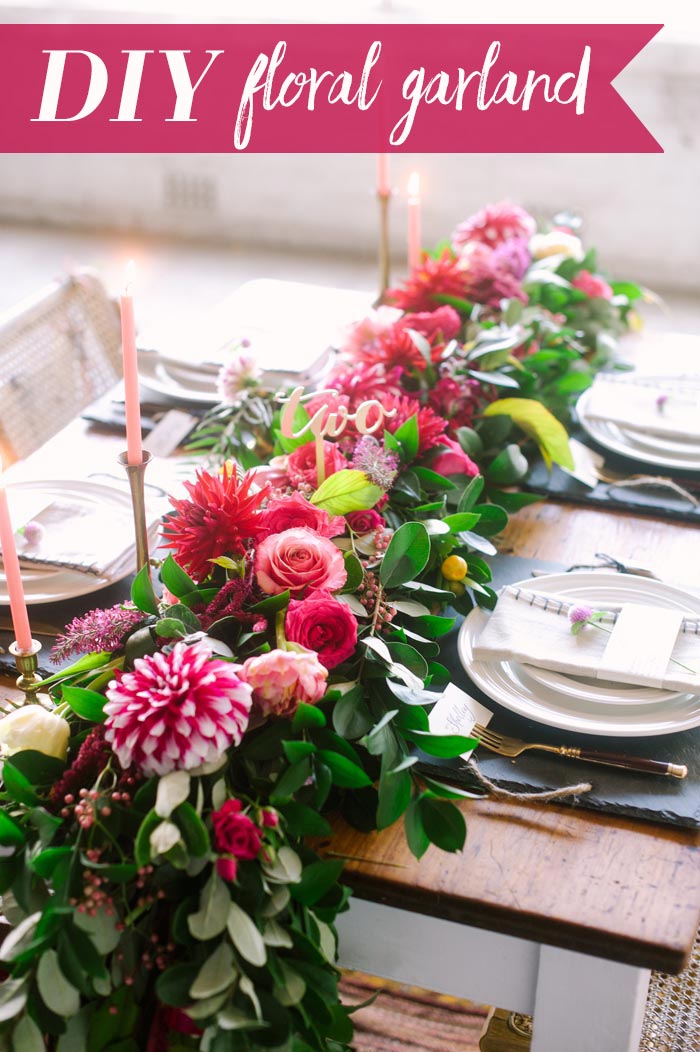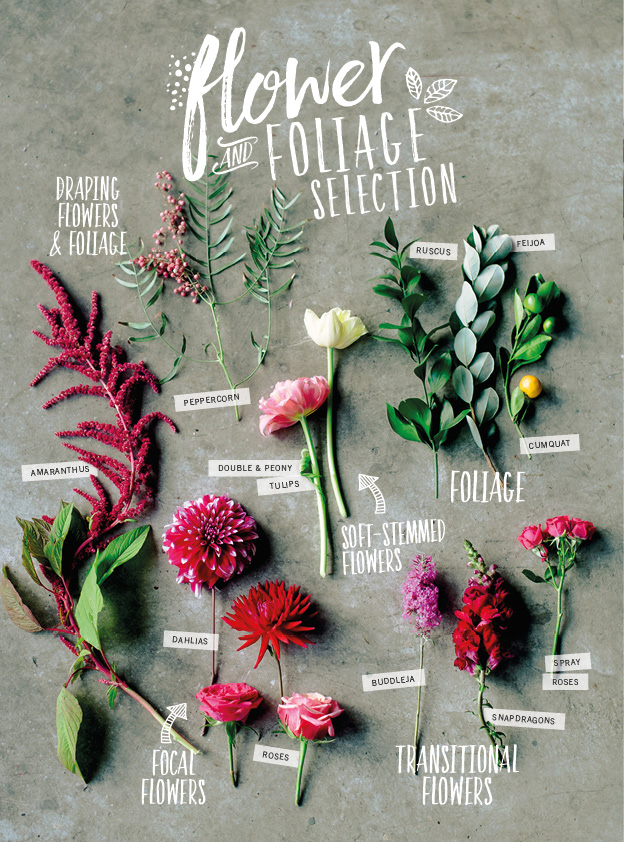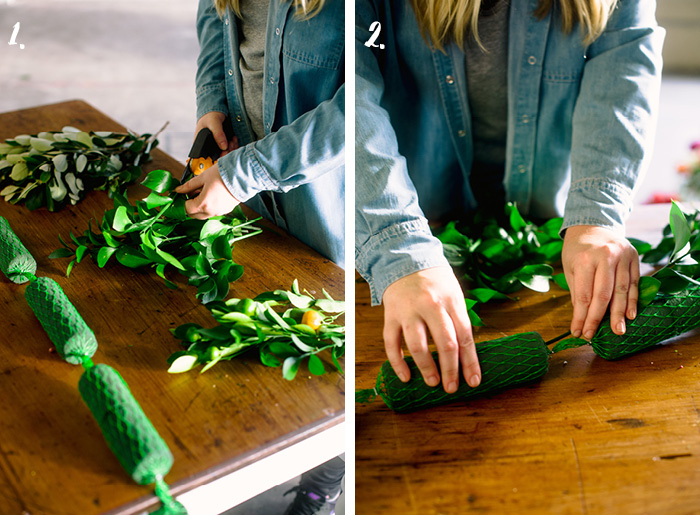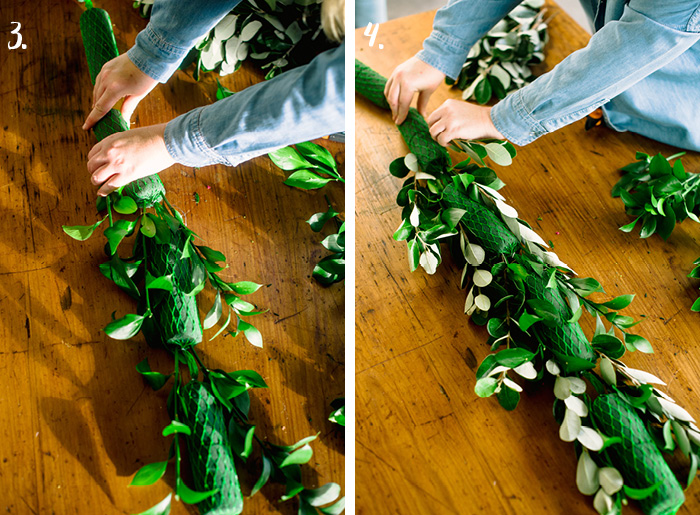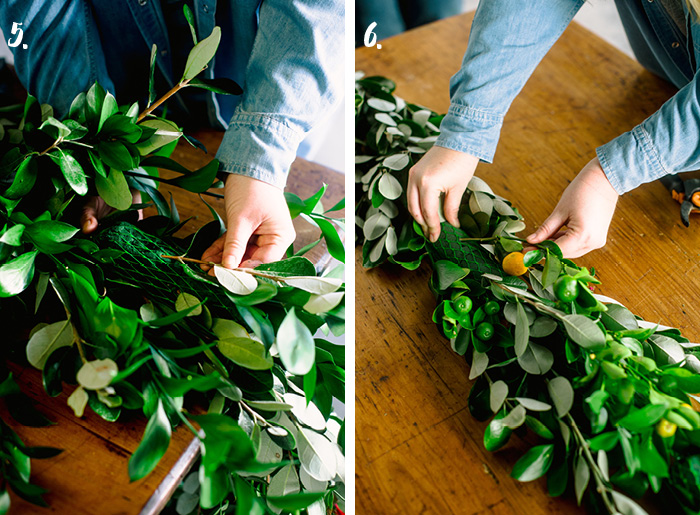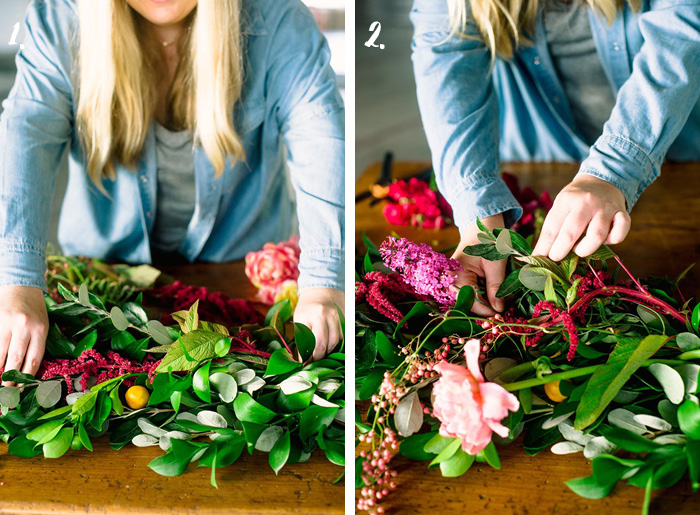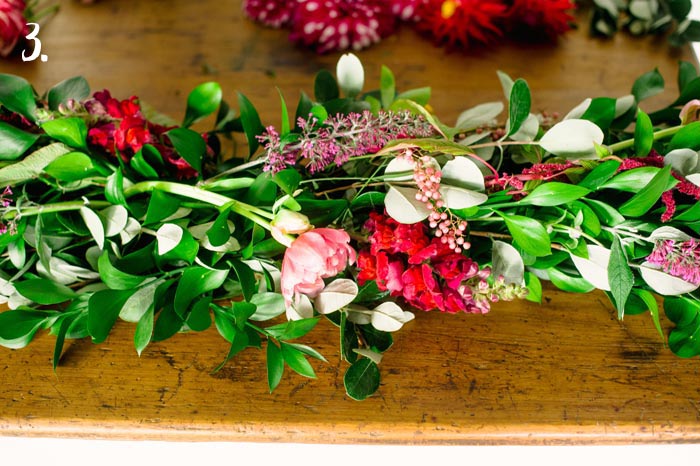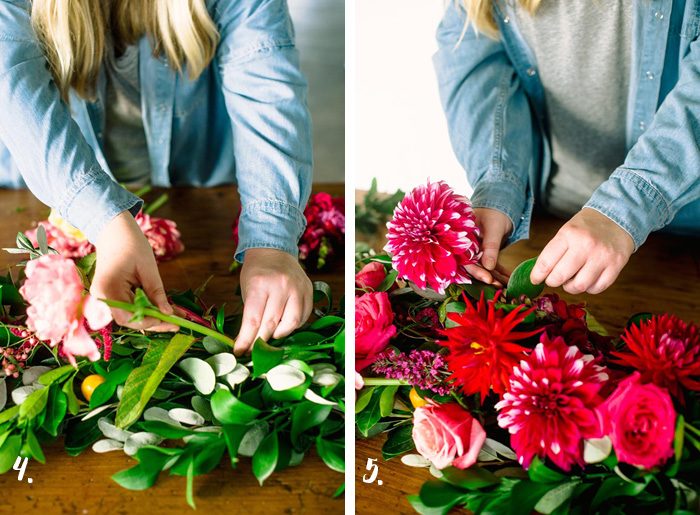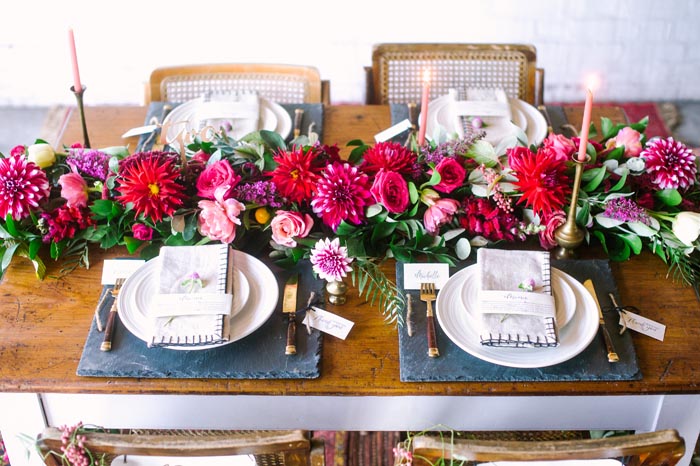Many couples are choosing less traditional weddings, which allows them to get creative with their wedding décor, making the day feel even more one-of-a-kind. Using the natural beauty of flowers to elevate the look of your bridal table is one way of expressing your personal style. We have put together an easy step-by-step tutorial the secrets of creating a stunning floral garland, overflowing with colour and texture that will make your bridal table one to be envied.
M A T E R I A L S
- Flowers
- Foliage
- Secateurs
- Scissors
- Buckets
- Water
- Oasis Garland Floral Foam
P R E P .
Foliage
Cut a selection of 10-15cm and 5cm length stems. Remove any foliage 2-3cm from the bottom of the stems. Cut each stem at a sharp angle to easily insert into the foam.
Flowers
Repeat the same process for the flowers but using only 10-15cm stems. Keep the flowers and foliage in water until ready to use.
F L O R A L F O A M
- Measure length, height
and width of your table. Cut the floral foam to size leaving enough space for
your guests' plates, glasses and cutlery. Immerse the floral foam in water allowing it to free float and sink
below the surface. Do not force it
to submerge as it creates air pockets which can impede uptake of water
by the flowers. Remove the floral foam from the water, drain briefly and place it on a plastic-covered working surface before adding the flowers. - Working on one half of the foam garland, insert the longer stems of feijoa foliage horizontally into each side before adding the smaller pieces. Stems need to be inserted at least 2cm to ensure they are secure. Repeat this step on the other end of the garland. See images 1 to 3.Note: For the lengths of garland that overhang the edge of the table, you will need to add foliage all the way around the foam so that no foam is visible.
- Insert the ruscus foliage in between the feijoa foliage in the same way as step 2. Repeat this step on the other end of the garland. See images 4 and 5 above.
- To enhance the look of the garland, add a few small stems of orange and green cumquats. To maintain balance, it is important to remember that if you add a piece of cumquat to the left side, you will also need to add a piece to the right side. Remember to leave some foam free to insert your flowers. See image 6 above.
A D D I N G F L O W E R S
- The draping flowers and foliage, like amaranthus and peppercorn, will establish the direction and shape of the garland as well as adding softness and colour. In addition to the table-top display, both plants with their draping habits, will look most impressive when used on the table-to-floor sections of the garland. See image 1 above.
- Transitional flowers are used to fill spaces between the draping and focal flowers. Before adding the transitional flowers, imagine where the focal and soft-stemmed flowers will fit. Remember to work on one half of the garland first and then focus on the other half. See image 2 above.
- Soft-stemmed flowers are delicate and not as easy to insert into floral foam. Do not cut the stems of the tulips too short as their stems can sometimes snap when inserting, but do cut the ends at a sharp angle. If the stems snap, simply recut and insert. When placing the flowers, imagine there is a continuous wavy line running down the middle of the garland and place the flowers accordingly. See images 3 and 4 above.
- Focal flowers are the most beautiful of the blooms. Group them in odd numbers, usually three, and by size, using one large, one medium and one small flower. If the flowers are particularly large, you can simply use one bloom. Dahlias have a ‘face’ and need to be placed with their face looking outwards. Again, imagine the continuous wavy line running down the middle of the garland before adding the dahlias. Take care not to cover any of the soft-stemmed flowers. Move from one side of the table to the other to insert the blooms and make sure the placements look attractive from each side of the table. Once you are happy with the placement of the dahlias, begin adding clusters of roses to cover up any foam, break up blocks of foliage, or create additional focal points. See image 5 above.
- Take time to look at the garland from both sides of the table and make any adjustments. Trim any stray pieces of foliage or add extra flowers or foliage to cover any exposed foam. Check the 90 degree angle where the garland goes over the table edge to the floor and make sure nothing has become dislodged.
T I P !
When working on the construction of the garland, think of it having a right and left end, with the flowers running in opposite directions from the centre of the garland – on the right side all the flowers should be directed right toward the floor; on the left side the direction should be left toward the floor. It is best to focus on one half of the garland at a time before repeating what you have done on the other side.
Tadaa!
For more DIT tutorials and tips, check out our DIY archive online or pick up the latest Modern Wedding DIY Magazine at the Modern Wedding magazine shop or at selected newsagents, Coles and Woolworths.
Styling Gail MacDiarmid Photography Mark Potter Photography Furniture and rugs Vintage Patina

